In the ever-evolving landscape of urban environments across the United States, the issue of crime remains a critical concern. As we step into 2023, understanding the safety dynamics of cities becomes increasingly pivotal. This blog delves into the latest data and statistics to unveil the 10 most dangerous cities in the United States, shedding light on the challenges these communities face and the urgent need for effective strategies to address crime and enhance public safety. From rising violent crime rates to contributing factors such as poverty, gang violence, and social disparities, this exploration aims to provide insights into the current state of urban safety across the nation.
The List of the 10 Most Dangerous Cities in the US as of 2023
10. Chicago, Illinois
Gun Violence, Drug Distribution & Gang Violence
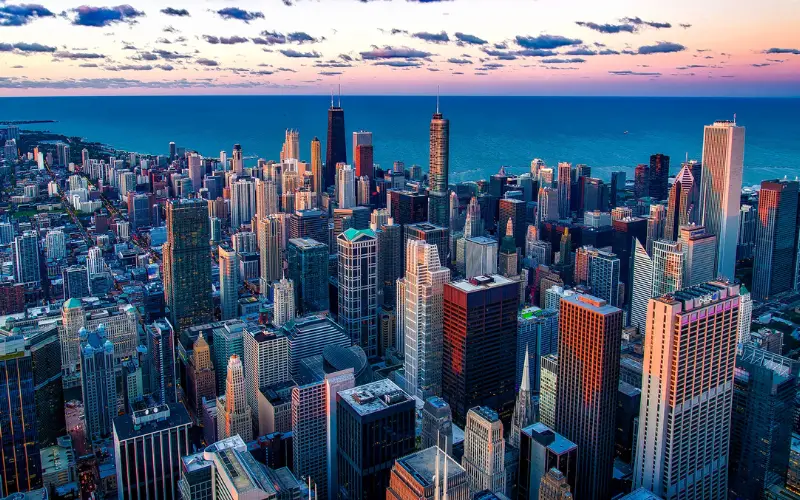
Chicago, Illinois, consistently ranks among the most dangerous cities in America, and recent data reveals a disturbing surge in violent crimes, with 725 reported homicides in 2022—a 43% increase compared to pre-pandemic levels in 2019. A major contributor to these high crime rates is gang violence, where various street gangs are involved in drug trafficking, territorial disputes, and acts of violence, leading to collateral damage among innocent bystanders and eroding community trust. In response, Chicago has implemented strategies such as increased law enforcement presence, targeted enforcement, and technology-driven solutions like gunshot detection systems to enhance public safety. Residents have also taken matters into their own hands, initiating community-led efforts like neighborhood watch programs and non-profit organizations providing alternatives for youth.
9. Atlanta, Georgia
Gang Violence, Drug Trafficking & Socioeconomic Disparity
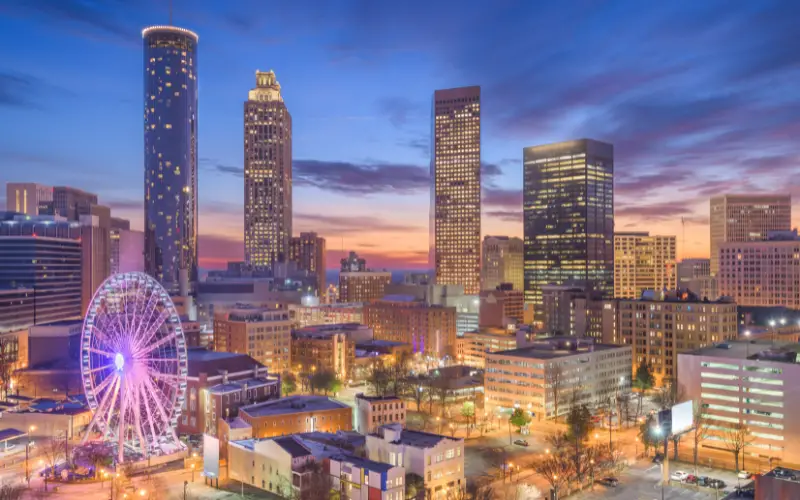
Atlanta, Georgia, confronts significant challenges related to crime despite recent improvements, grappling with persistently high crime rates. One major challenge is posed by gang-related activities, with various street gangs engaging in criminal pursuits like drug trafficking, robberies, and violence. Additionally, social inequalities contribute to the crime problem, as disparities in income, education, and healthcare create an environment conducive to criminal behavior. Community-based initiatives, led by non-profit organizations, neighborhood associations, and concerned citizens, play a vital role in crime prevention and community support.
8. New Orleans, Louisiana
Katrina Crime Surge, Gang Drug Trade & Violent Crime
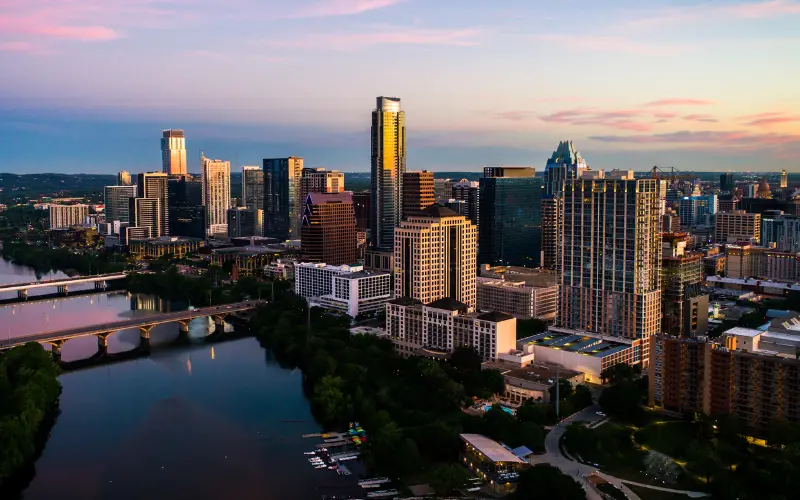
Despite continuous efforts to address public safety challenges, New Orleans, Louisiana, grapples with a troubled history of consistently high crime rates, earning its reputation as one of the most dangerous cities in America. The aftermath of Hurricane Katrina in 2005 further intensified crime, as the hurricane’s devastation, resident displacement, and societal breakdown created conditions conducive to criminal activities. Persistent contributors to the city’s crime problem include gang-related activities and the drug trade, with street gangs competing for territory leading to violent clashes and shootings, while the drug trade exacerbates socio-economic disparities in marginalized communities. The government of New Orleans has responded with various safety and crime combat initiatives, deploying resources to high-crime areas, implementing community policing strategies, and investing in education, social services, and job training programs.
7. Cleveland, Ohio
Violent Crime, Property Crime, Drug Trafficking & Poverty
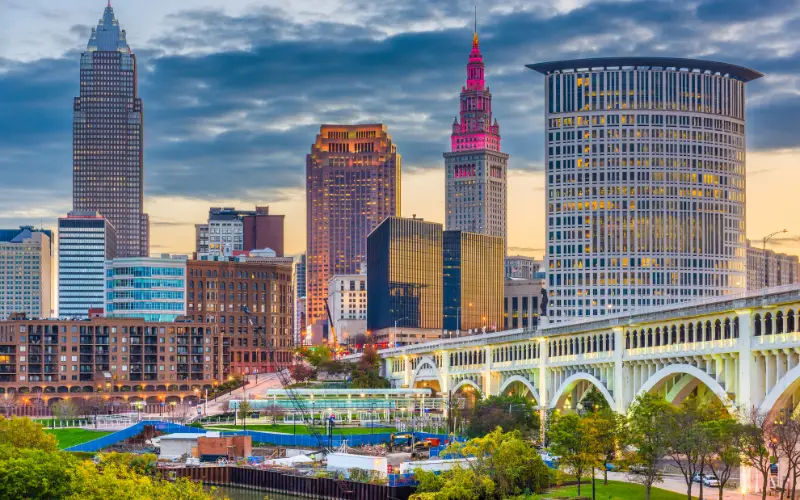
Cleveland, Ohio, grapples with persistent challenges in crime and public safety, consistently reporting high rates of various offenses, including violent crimes, robberies, and burglaries. Socioeconomic factors significantly contribute to Cleveland’s crime rates, with high poverty rates, limited educational opportunities, and restricted healthcare access creating an environment conducive to criminal activity. Another significant challenge is drug-related crimes, with an increase in drug trafficking and addiction fueling other criminal activities. Combating Cleveland’s crime problem requires collaborative efforts between the government and the community, with law enforcement working closely with community organizations and residents to develop targeted strategies, foster trust, and implement community outreach programs.
6. Birmingham, Alabama
Violent Crime, Poverty & Gun Violence
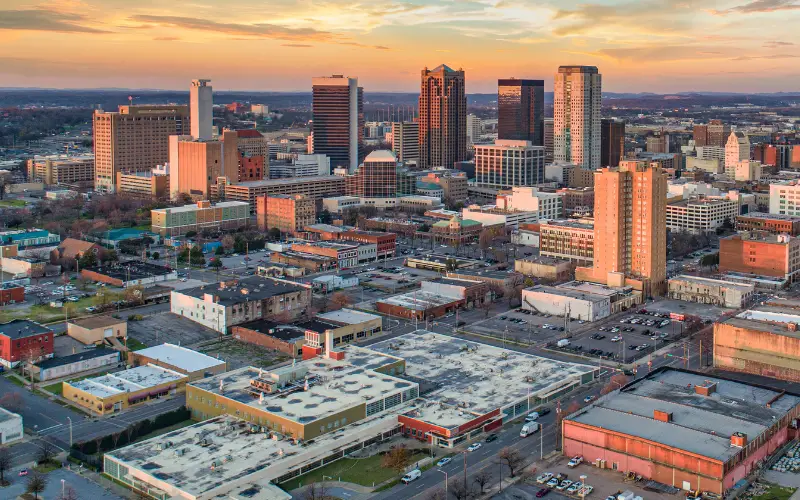
Birmingham, Alabama, faces a significant challenge with violent crime, evident in its alarmingly high violent crime index encompassing homicides, robberies, and assaults. Contributing factors, such as poverty and unemployment, create an environment fostering criminal activity as individuals, facing limited access to education and healthcare, may turn to crime for survival. Gun violence is another major challenge, resulting from the widespread availability of firearms, socio-economic disparities, and community tensions, contributing to a concerning number of shootings and homicides. In response, Birmingham’s community members have joined forces, implementing preventative measures through grassroots organizations, community centers, and faith-based groups that offer support, mentorship, and educational programs for at-risk youth, providing alternatives to criminal involvement.
5. Memphis, Tennessee
Violent Crime, Gangs, Drug Distribution & Poverty
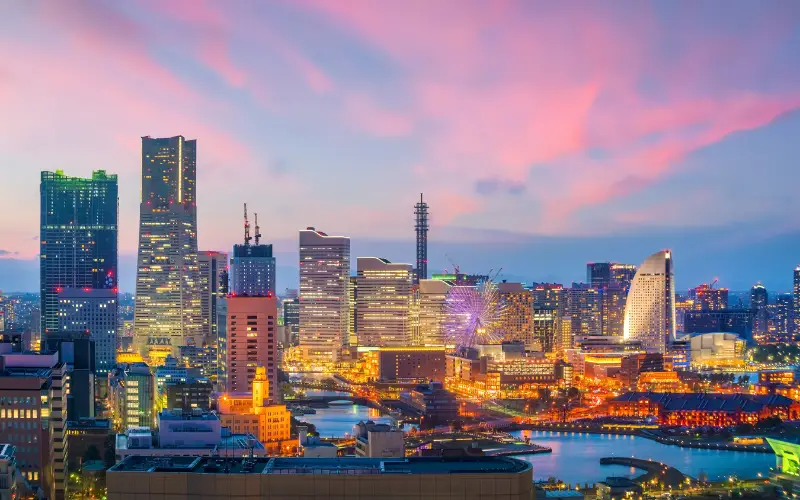
Memphis, Tennessee, grapples with persistent violent crime, consistently reporting high rates of homicides, assaults, and robberies that create a hazardous living environment, underscoring the urgent need for effective crime prevention strategies. Gang activity and drug-related violence, including clashes and distribution, pose a substantial threat, perpetuating a cycle of violence in the city. The clear link between poverty and crime is evident through high poverty rates, limited job opportunities, and inadequate access to education and healthcare, fostering an environment conducive to criminal behavior. Addressing socio-economic disparities and breaking the cycle of poverty are crucial for reducing crime and fostering a safer Memphis. Community-led initiatives, involving non-profit organizations, faith-based groups, and concerned citizens, are pivotal in providing support and resources.
4. Oakland, California
High Crime, Gang Violence, Drug Trafficking & Poverty
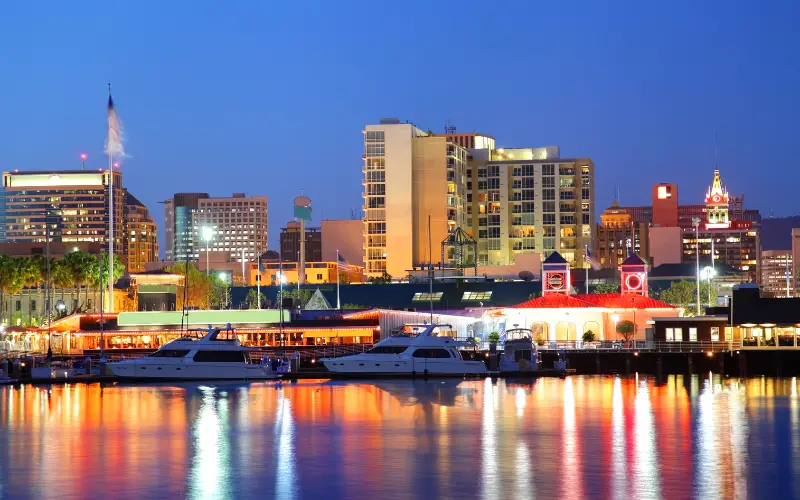
Oakland, California, consistently ranks among the most dangerous U.S. cities due to enduringly high crime rates, especially violent crimes like homicides, shootings, and robberies, instilling fear among residents and emphasizing the urgency of community safety. Gang violence and the drug trade contribute significantly to the crime problem, with street gangs engaging in territorial disputes and drug trafficking, often impacting innocent residents. The correlation between poverty and crime is evident, with high poverty rates exacerbated by a lack of affordable housing and limited job opportunities creating an environment conducive to criminal behavior. To address this, Oakland is implementing systemic solutions, including improving affordable housing access and providing job training. Safety initiatives involve community policing, violence intervention programs, and investments in education, social services, and economic revitalization projects, aiming to create a safer and more prosperous Oakland for all residents.
3. St. Louis, Missouri
Violent Crime, Poverty & Youth Gun Violence
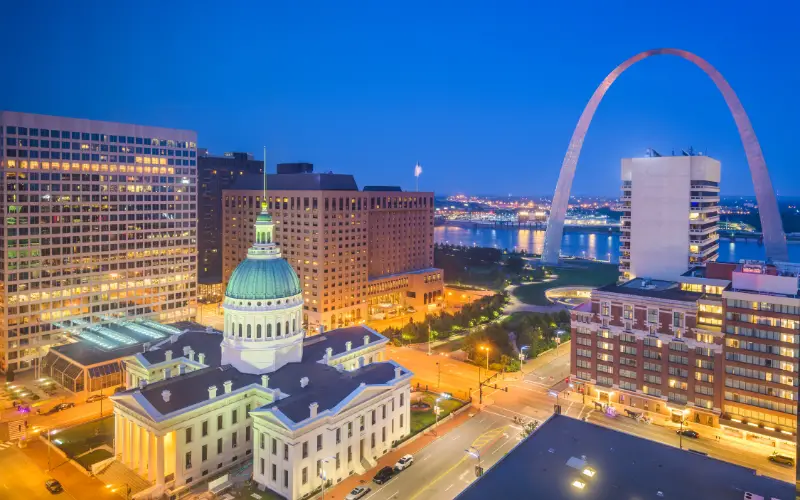
St. Louis consistently ranks among the most dangerous U.S. cities, grappling with high crime rates, particularly in violent crimes, which instills widespread unease. Contributing factors, such as high poverty rates, unemployment, and limited access to quality education and healthcare, create an environment conducive to criminal activity. Gun violence driven by easy firearm accessibility and youth involvement in criminal activities is a significant concern tied to poverty, limited educational opportunities, and a lack of positive role models. Engaging youth through meaningful activities, mentorship programs, and educational/vocational opportunities becomes crucial in breaking the cycle of violence and fostering a safer and more prosperous community.
2. Baltimore, Maryland
Homicide, Drug Related Violence & Community Relations
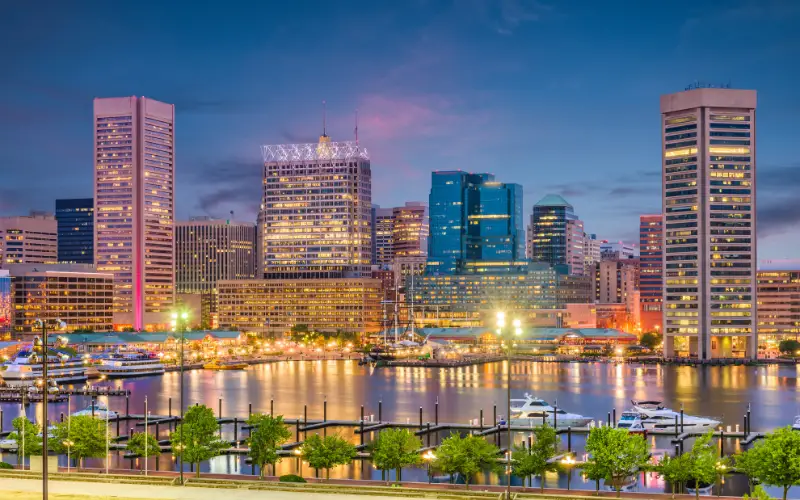
Baltimore faces persistently high homicide rates, consistently ranking among the most dangerous U.S. cities, affecting families and communities. Drug-related violence, linked to the city’s proximity to trafficking routes and a history of addiction, is a major contributor. Rival drug gangs, vying for control, lead to shootings and homicides, exacerbating social issues like poverty and addiction. To address the crime problem, efforts are needed to improve historically strained police-community relations, with initiatives like community policing programs aiming to enhance communication and cooperation, fostering public safety and reducing crime in Baltimore.
1. Detroit, Michigan
Violent Crime, Economic Decline & Urban Decay
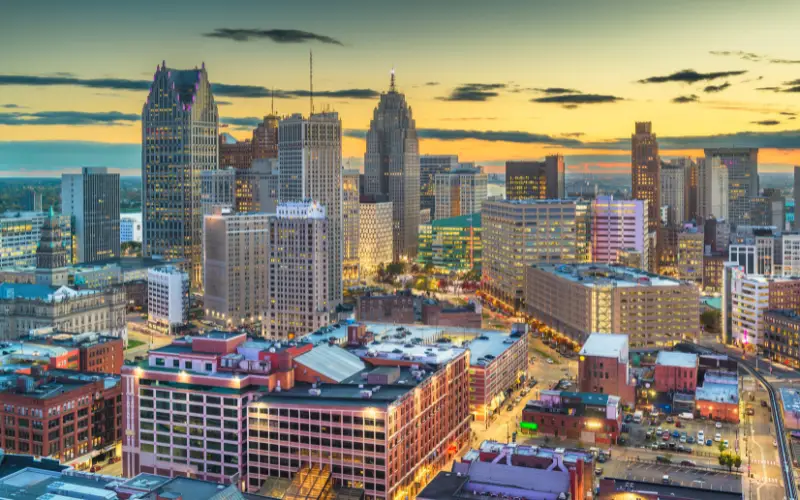
Detroit, Michigan, is consistently ranked among the most dangerous U.S. cities due to high rates of violent crime, fueled by the prevalence of guns and gang activity. The city’s economic decline, marked by deindustrialization and population loss, has created conditions conducive to crime, with high unemployment and poverty levels. Urban decay, evident in abandoned buildings and neglected neighborhoods, fosters criminal activities like illicit drug trade and gang actions, perpetuating a cycle of crime and despair among residents.
Conclusion
Examining the 10 most dangerous cities in the United States as of 2023 offers a sobering snapshot of the complex challenges that communities face in ensuring public safety. While these cities grapple with varying degrees of crime, it is essential to recognize the multifaceted nature of the issues at play, including socio-economic factors, gang violence, and the aftermath of natural disasters. As we conclude this analysis, it becomes evident that addressing these challenges requires comprehensive, community-driven approaches. By fostering collaboration between law enforcement, local governments, and residents, and by implementing targeted initiatives to address root causes, there is hope for positive change and the creation of safer, more resilient urban environments in the years to come.
Recent Posts
Science Trivia - Astronomy ...
Step into a realm of nostalgia as we embark on a journey through the annals of pop culture and bid farewell to 35 recently obsolete technologies. In the ever-evolving landscape of innovation, certain...
